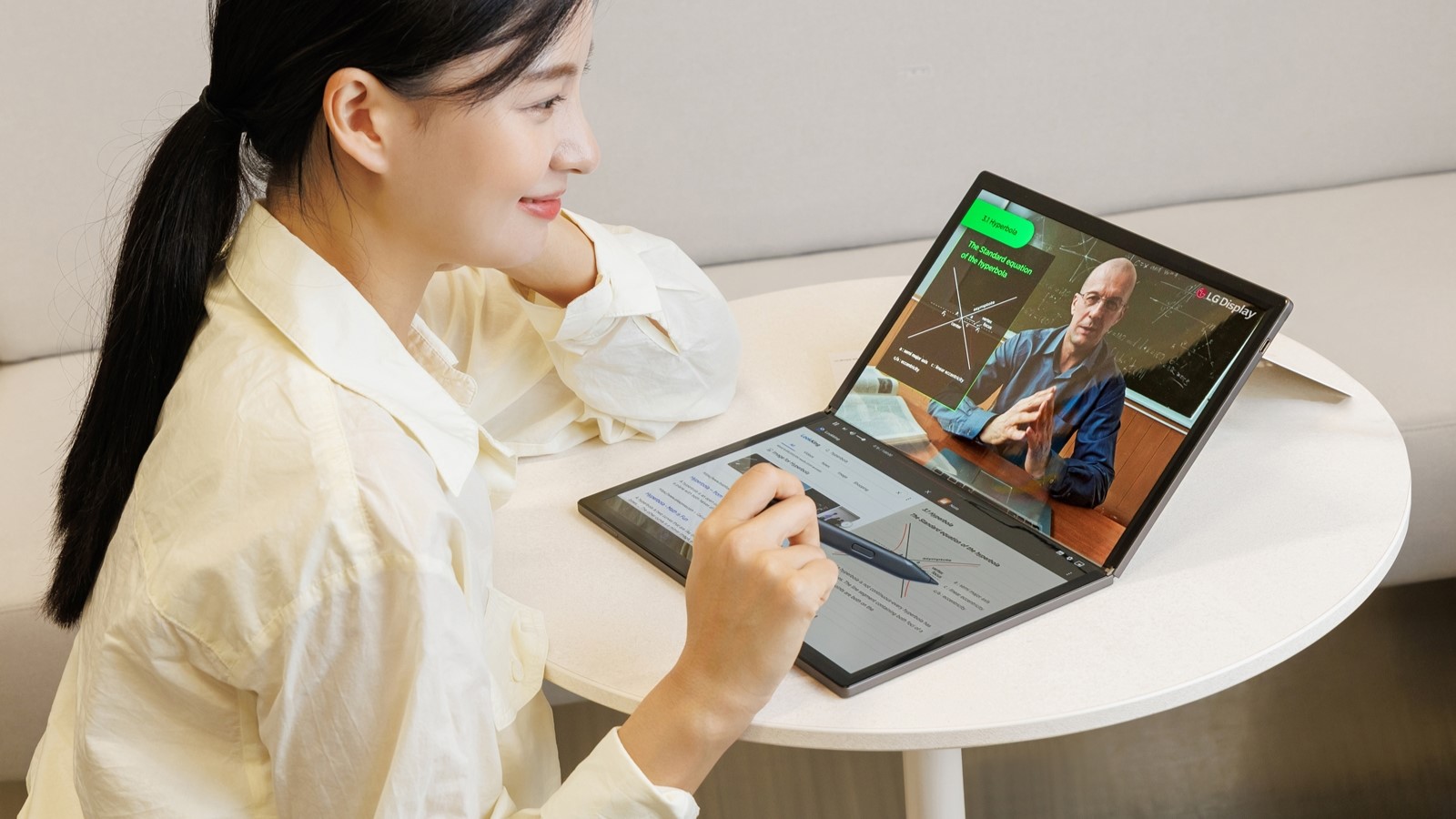LG's next-gen folding OLED screen for laptops is exactly what we've been waiting for

LG has announced that it will begin mass production of its 17-inch Foldable OLED panels for laptops.
The foldable panels use the Tandem OLED structure, which was first applied to automotive displays, but which now has a much longer lifespan that makes it suited for PCs and other devices used in the IT industry.
The OLED panel uses a specialized material that minimizes creasing at its folding point, resulting in a seamless and clear display. It’s also a touchscreen, sensitive to both finger or stylus presses, making it suitable for a wide range of devices.
It features a QHD+ resolution (2560 x 1920) and an infinite contrast ratio – achieved when a device emits no light at all as its darkest color – that ensures high-definition content can be enjoyed at any time. Fully unfolded, the screen is a 17-inch portable monitor or tablet with a 4:3 ratio, but by adjusting the angle you can turn it into a 12.3-inch laptop with a 3:2 ratio.
LG started making 13.3-inch foldable OLED screens for laptops back in 2020, and now it’s expanding its lineup to include 17-inch screens as well.
LG is changing the OLED panel market
Not only has LG been cornering the OLED screen market in both IT and automotive, it’s also been constantly investing in better and smaller OLED TV displays.
It improved its tech starting in 2022 with OLED.EX, which offers up to 30% higher brightness than regular OLED panels. It provides panels for Hisense, Sony, Panasonic, Philips, and Vizio, as well as LG’s own TVs, shows how much its advancements affect the industry. This enhancement was most likely a response to Samsung’s QLED technology, which is a manufacturer that releases some of the best TVs out there.
Sign up for breaking news, reviews, opinion, top tech deals, and more.
Earlier this year, LG announced that it was making 32-inch, 34-inch, and 39-inch OLED TV panels, which would join the 27-inch and 45-inch ones it already manufactures. Producing smaller OLED screens seems like a sensible move, as there’s a sizable market for those who want smaller TVs with high-quality displays; larger screens can be far more expensive, space-consuming, and downright garish to some, and adding OLED and even 4K resolution to 32-inch screens would make for some of the best 32-inch TVs in the market.
You might also like

Named by the CTA as a CES 2023 Media Trailblazer, Allisa is a Computing Staff Writer who covers breaking news and rumors in the computing industry, as well as reviews, hands-on previews, featured articles, and the latest deals and trends. In her spare time you can find her chatting it up on her two podcasts, Megaten Marathon and Combo Chain, as well as playing any JRPGs she can get her hands on.